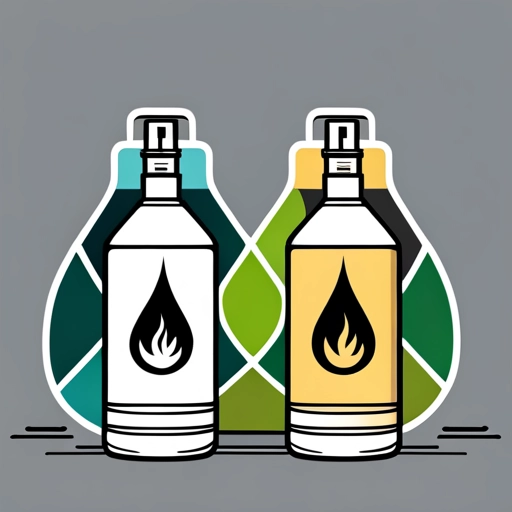The question about which backcountry fuel is best has been long debated. This post focuses on comparing canister fuel (isobutane) to liquid fuel (white gas) since these are by far the two most popular choices when it comes to fuel used for lightweight backpacking style stove cooking.
Overview:
A general rule of thumb for carrying the liquid fuel stove is for conditions below freezing and/or greater than a 3-day trek. Isobutane canisters (canister fuel) are generally good for everything else.
Canister stoves are generally much smaller and lighter than liquid fuel stoves and are significantly easier to use. This makes them ideal for shorter trips that only require a little bit of cooking or heating water.
Liquid fuel stoves start to become a better option for longer duration trips because the weight savings of the canisters start to diminish as you need to carry more canisters. Whereas the liquid fuel capacity can be better controlled by choosing the right fuel bottle capacity and filling to the needed amount.
Each trek is unique in terms of cooking requirements and fuel capacity. The rest of this post will dive into considerations to help make an informed choice for your backcountry adventure.
Canister vs Liquid Fuel Comparison Table:

*There are multi-fuel stoves like the MSR WhisperLite Universal that can use both liquid and canister fuels. Obviously these would be equivalent to each other.
Cold Temperatures
Cold temperature is the most impactful consideration in determining which type of fuel you should plan to carry in the outdoors. Liquid Fuel is a clear winner in this category. The isobutane performance starts to drop off below freezing and then stops performing usually somewhere between 5 – 20 degrees Fahrenheit (-6 – -15C). Liquid fuel will continue to get the job done due to the ability to pressurize the fuel system with the manually pump. Check out this post for more information on how temperature and elevation impact isobutane performance.
Fuel Weight
Isobutane and white gas are very similar in terms of energy output per gram of carried weight of the fuel. This makes the comparison a bit of a draw and more about how much fuel do you need to carry to last the duration of the trip. The need to carry less fuel will typically benefit using canisters. Longer treks will typically benefit using liquid fuel for a similar heating requirements/usage. This is due to the need to carry multiple canisters, and eventually empty canisters, for the duration of the trip. A good rule of thumb is use canisters for trips less than 3 days and liquid for longer trips.
Stove Weight & Stove Size
The leading canister stove options pretty much win this category hands down. There are many options to select from when it comes to a simple lightweight stoves that easily screw onto the top of a canister. Canister stoves generally fall in the range of just 30-60 grams (2-3 oz) when compared to the liquid fuel that start in the range of 120 -240 (10-12oz) not including the fuel bottle. Liquid Fuel stoves are almost always bigger and heavier, but can be a good option if cooking with larger pots or more than 2 people. There are a few multi-fuel options in the liquid fuel format with the option to use a canister fuel.
Ease of Use
This is another category that is won by the canister fuel. Canister fuels typically come in the following three sizes: 110g, 240, & 450g; (3.5oz, 8.5oz, 15.9oz). These are net weights of the fuel and do not include the weight of the canister (9 brands compared). Stoves typically just screw on to the canister with an international standard fitting. To light the stove, you just open the value and light. It’s that easy.
Liquid fuel stoves on the other hand require an additional fuel bottle that is typically found in three sizes of around: 10oz, 20oz and 30oz; (295ml,591ml, 887ml). The stove will come with a manual hand pump that replaced the cap. Fuel (white gasoline) is purchased separately. Starting a liquid fuel stove and maintenance requires some extra steps that can take a few tries to master.
Fuel Availability
Fuel availability is mostly won by the liquid fuel category, although canister fuel is generally not an issue in the United States. Liquid fuel can be found around the world and depending on your stove, you may be able to use white gas, regular gas, kerosene and even canisters. Canisters are gaining popularity around the world, but there are many regions where they can be hard to come by. Keep TSA restrictions in mind when planning to travel with fuel and it’s always best to know what is available in the region of travel.
Environmental Impact
This is won by the liquid fuels. The refillable bottle makes them less wasteful than the canister fuel. Empty fuel canisters are made of mixed metal which can only be recycled at certain facilities. Another downside to the canisters is the need to carry the empties for the remainder of the trip. Some manufacturers offer a tool to crush the canisters down to a smaller size. Recycle programs my be offered by your local outdoor store or outfitter.
Cost to Operate
This category goes to liquid fuel because of the refillable bottles. But there are a few things to keep in mind. First, liquid fuel stoves typically have a higher initial cost and second, they typically require a bit more maintenance. These costs are generally offset over time due to the significantly higher cost of the canister fuel vs white gas.
Maintenance
This category generally goes to canister fuel. Fuel canisters require zero maintenance whereas the liquid fuels require some maintenance of the pump mechanism over time. Liquid fuel stoves are always more complex than canister stoves, but maintenance is easy and most stoves are robust and field serviceable with available rebuild kits.
Conclusion
Placing a winner between these two options really depends on trip plans, location, and climate. Owning both types of stoves can provide flexibility. Please add comments below even if you disagree with my perspective. It’s great to hear about everyone’s experience







